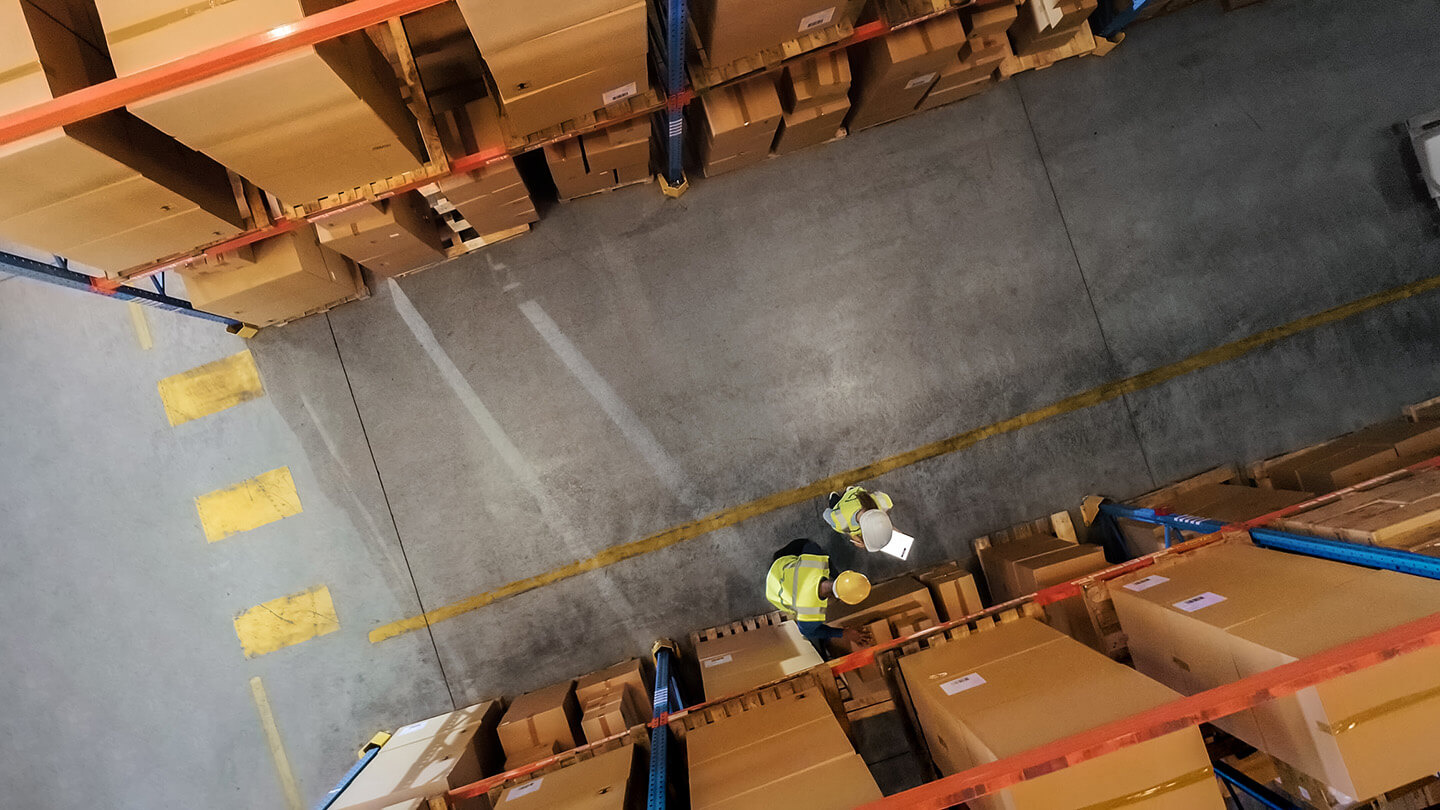
Why managing your marketing supply chain matters
Expect the unexpected. It is one thing to start every project with the conscious realization that unforeseen things, but when they happen beyond the scope of your direction is when the process becomes unnecessarily complicated. Such was the situation Almaden Global found itself in when a long-time client ordered a custom event kit from a different supplier. The kit was needed within a specific time frame to meet a series of scheduled event dates.
However, when it came time to ship the product, the new supplier did not have sophisticated carrier software. Had Almaden been part of what turned out to be an avoidable expenditure, the marketing supply chain company would have avoided the disaster. The alternate buyer was unaware of the systems Almaden already integrated into its distribution center—systems that were set up specifically to manage the process and reduce shipping costs.
”Failure to establish a well-defined supply chain creates havoc with corporate brand guidelines and jeopardizes the objective that marketers are working hard to enhance and promote.
Expect the unexpected. Unless of course, everything gets thrown into your lap out of left field. Desperate to hit deadlines and, in essence, save the day, the client and rogue buyer reached out to Almaden to help rectify the situation. Acting swiftly in the face of deadline-daunting odds, the Almaden team created the necessary shipping documents that enabled discounts.
But the damage was done, as many of the event dates were missed.
Jack Greene, Senior Director Enterprise Accounts for Almaden, remembers the day well. “Our team was unfortunately asked to stabilize a situation that had become a costly error and would never have occurred had the supply chain been utilized as designed. There are multiple reasons companies feel they need to go outside the approved supply chain system. Ill-defined corporate policies. An attempt to reduce cost or improve logistics. Personal relationships or benefits. Or perceived quality or specification metric deltas. Whichever reason they choose to go rogue, the situation can turn potentially vast and costly.”

Rogue, tail, or maverick spending, whichever term it is given, is a marketer’s biggest temptation—and its greatest foe. Unmanaged, and non-compliant expenditures are the evils that lurks below the surface of a seamless marketing supply chain process. Since its founding in 1998, Almaden has created a reputation as a preferred partner to some of the best-known brands across the country and world. Its technology-enabled, high-touch service model is why rogue buying should not happen under its watch.
Why does it happen? “It is usually seen at the mid-management level or below in organizations experiencing hyper-growth,” Greene says. “Companies are under tremendous pressure today to pursue market share, which can lead to some poor decision-making in a fast-paced environment. Failure to establish a well-defined supply chain creates havoc with corporate brand guidelines and jeopardizes the objective that marketers are working hard to enhance and promote.”
As was the case with Almaden’s aforementioned client, the repercussions of stepping outside the lines can be costly, including exercising a breach of contract with the client and to the existing supply network; brand diminishment or reputational damage; delayed or potential failure to meet distribution commitments; and potential incompatible or non-compliant to matching components.
The solution is as easy as it is tempting to stray. Greene recommends finding scalable partners that not only understand your business model, but also have experience in your market. The key is to find a supply chain partner that is always looking several steps ahead — one that can innovate and help avoid the pitfalls that will surely arise and complicate your marketing supply chain. “Efficient partnerships in the supply chain are the result of collaboration and trust,” Greene says. “They take time to develop. Organizations that shuttle back and forth among a disjointed vendor base will never achieve and maintain the consistency that successful brands aspire to.”

Not changing for change’s sake
The Frezh Team is a food brokerage company specializing in private label solutions for chains and distributors serving the needs of consumers interested in Hispanic foods. As founder and Principal, Miguel De la Torre has seen his share of trains going off the track when it comes to adhering to the supply chain route.
During the pandemic, he recalls a U.S. company that was importing beverages from Asia. Unfortunately, due to pandemic-stricken supply chain lines, the company had a supplier that was unable to keep up with the volume. Desperate for relief, it sought out another source. The product quality was similar. The price was fair. And the logistics were reasonable. The only difference was that the bottle the new supplier had was clear, not green. The market was used to seeing the product in a green bottle, i.e., its branding worked.
”Efficient partnerships in the supply chain are the result of collaboration and trust. They take time to develop.
Jack GreeneSenior Director Enterprise Accounts, Almaden Global
Needless to say, when the product finally hit the retailers, the customers did not pick it up. “Same product, same price, different bottle, different results,” De la Torre says. “Something so simple became a nightmare. It had many returns, cost them many sales and resulted in a major loss in confidence from its customers. They had to switch back immediately.”
De la Torre likens the scenario to that uncomfortable moment when people go to a new stylist or barber. While you may think it is time for a change, you never know what you are going to get. “In my opinion, some people are too busy planning sales and revenues, instead of understanding how their actions affect others. Most organizations revolve around sales-driven principles, so back-office planning is not as exciting or well rewarded. I have always made it a point to highlight how easy it is for a person in a sales role to outline the deficiencies of the supply chain team, as it is pretty evident when there are no materials or products.”
While the pressure to make an alteration in the supply chain can be intense as it applies to the different stakeholders in the process, the outcome oftentimes can not only be disruptive, but painful. And while the reasons for adhering to the supply chain process could number in the hundreds, De la Torre breaks the process down to 10 steps:
- Vendor ID
- Certifications Required
- Formulation
- Testing
- Package Design
- Case Design
- Costing
- Logistics
- Warehousing
- Communication of Change to final users
You can multiply the aforementioned factors by the two most critical ones— time (how fast do you have to get this done) and volume (how many SKUs do you have to change at this time). The sheer number of activities can overwhelm and break any organization.
“Innovation is always key, particularly in times of shortages,” De la Torre says. “A new product, new packaging or a new service can provide valuable alternatives to the market if well planned, well communicated to the trade and well executed. But in times of uncertainty, boldness makes the distance between the traditional and the risk takers exponentially large.”
The key: Be sure to seek the advice of your supply chain partner before setting off in a new direction. Going rogue is a device best left undone.
3 reasons supply chains can break
- Service issues — Whether it’s fulfillment rates, relationship issues or invoicing accuracy, companies do not disrupt their flow. In the end, any change will always cause disruption, so the less changes the better.
- Technological advances — If a customer requests a new product or if the competitor is offering something different, changes are always sought. Sometimes, consistency is the best ally.
- Price — How everyone values services and products at a certain time is unfortunately different. The perception of value is subjective and, in times of stress for a business, this dimension always springs up.
